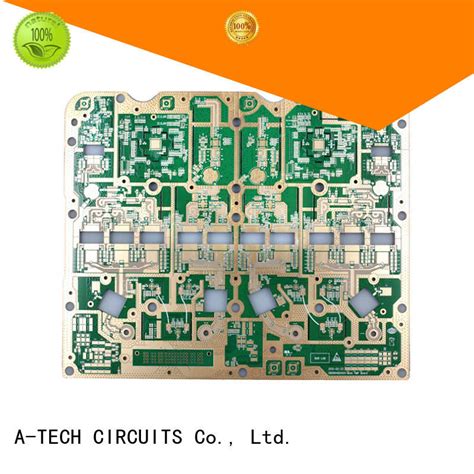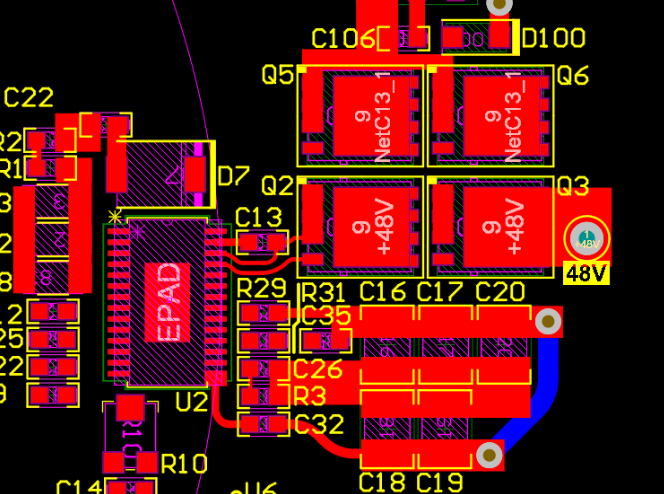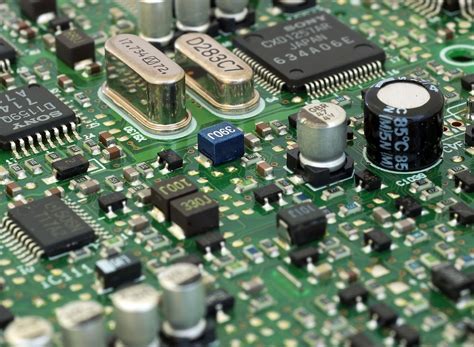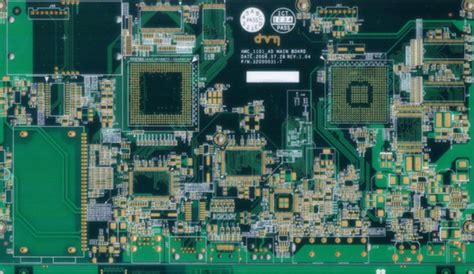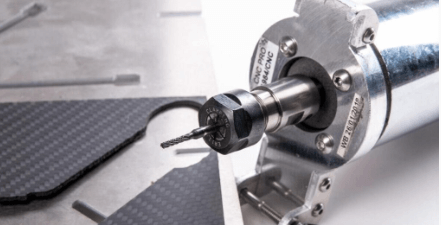Decoding Flex PCB Cost Drivers: Production Economics Unveiled

Key Takeaways
Understanding PCB manufacturing cost dynamics starts with recognizing three core elements: design complexity, material selection, and production scalability. While traditional rigid boards rely on standardized processes, flex PCBs demand specialized handling—from polyimide substrates to laser-drilled microvias—which directly elevates PCB manufacturing expenses. For instance, hybrid designs integrating rigid and flexible sections often require multi-step lamination, increasing labor and material waste.
"Optimizing flex circuit layouts early can reduce PCB manufacturing business overhead by 12-18%," notes a report on industry benchmarks for PCB production costs.
Here’s a breakdown of cost contributors:
| Factor | Flex PCB Impact (%) | Rigid PCB Impact (%) |
|---|---|---|
| Material Costs | 38% | 22% |
| Labor & Equipment | 29% | 18% |
| Testing & Rework | 20% | 12% |
| Regulatory Compliance | 13% | 8% |
PCB manufacturing companies face tighter tolerances with flex circuits—think ±0.05mm alignment vs. ±0.1mm for rigid boards. This precision demands advanced machinery and skilled technicians, further inflating PCB manufacturing cost. When comparing rigid-flex alternatives, remember that combining materials like FR-4 and polyimide creates compatibility challenges during soldering, often requiring custom tooling.
To mitigate expenses, prioritize design-for-manufacturing (DFM) principles and collaborate closely with suppliers. While flex PCBs remain 7x more expensive than rigid ones, their durability in high-stress applications often justifies the premium for mission-critical systems.
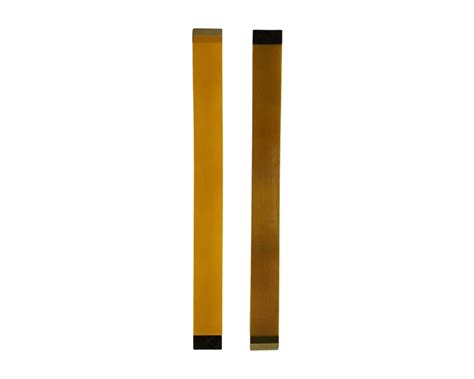
Why Flex PCBs Cost 7x More
Understanding why flex PCB manufacturing incurs significantly higher costs than traditional rigid boards starts with their unique design and production requirements. While rigid PCBs rely on standardized processes, PCB manufacturing companies face exponentially greater complexity when producing flexible circuits. This price disparity stems from three primary factors: material selection, specialized fabrication techniques, and lower economies of scale.
First, PCB manufacturing cost surges with flex circuits due to high-performance substrates like polyimide films, which cost 3–5x more than standard FR-4 laminates. These materials must withstand repeated bending while maintaining electrical integrity—a requirement that eliminates cheaper alternatives. Second, PCB manufacturing business workflows for flex designs demand precision laser drilling, advanced etching for thin copper layers, and specialized adhesives, all requiring dedicated equipment and operator expertise.
Finally, production volumes for flex PCBs remain lower than rigid boards, limiting bulk material discounts. While rigid designs might utilize panel sizes up to 18"x24", flex circuits often require smaller panels and custom tooling to prevent damage during handling. When combined with stringent testing protocols for dynamic applications, these factors create a cost structure that’s inherently less scalable. For projects balancing flexibility and budget, some engineers opt for rigid-flex hybrids—though even these alternatives rarely reduce costs below 4x traditional PCBs.
Hybrid PCB Design Complexities
When dealing with hybrid PCB designs, you’re essentially merging rigid and flexible circuitry into a single unit—a process that introduces unique challenges. Unlike standard boards, these designs require PCB manufacturing companies to navigate conflicting material behaviors: rigid sections demand stability, while flex areas need to withstand repeated bending. This duality forces engineers to balance mechanical stress distribution with electrical performance, often requiring iterative prototyping that inflates PCB manufacturing cost.
Material selection alone adds layers of complexity. For example, adhesives that bond rigid and flex layers must maintain integrity across thermal cycles, yet remain thin enough to avoid impeding flexibility. PCB manufacturing here often involves specialized substrates like polyimide, which costs 3–5x more than standard FR-4. Additionally, hybrid designs demand precision in layer alignment—a task requiring advanced equipment and skilled labor, further straining PCB manufacturing business budgets.
Transitioning between rigid and flex zones also introduces signal integrity risks, necessitating extra shielding or impedance matching. These design compromises don’t just affect performance; they cascade into longer production timelines and tighter tolerance margins, making hybrid PCBs a premium offering in the electronics landscape.
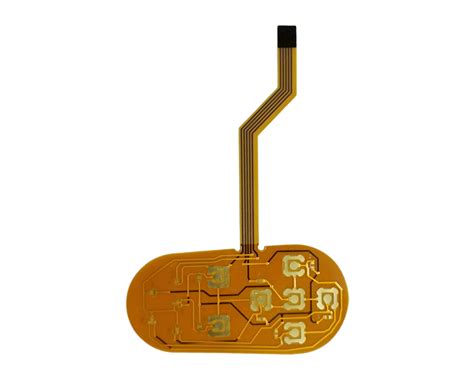
Material Challenges in Flex Circuits
While designing flexible circuits, you encounter material choices that fundamentally differ from traditional PCB manufacturing. Unlike rigid boards that use FR-4 substrates, flex circuits rely on specialized polymers like polyimide or PTFE films, which offer unmatched bendability but cost 3-5x more. These materials require precise handling during PCB manufacturing processes to avoid wrinkles or tears, often demanding climate-controlled environments that add to PCB manufacturing cost.
Another layer of complexity arises from adhesive systems. High-performance acrylics or epoxy blends must maintain adhesion across thousands of flex cycles, a specification rarely needed in standard PCB manufacturing business operations. Additionally, copper foils for flex circuits are thinner (often ½ oz vs. 1 oz in rigid boards), increasing material waste during etching and requiring tighter process controls.
To mitigate expenses, PCB manufacturing companies often optimize panel utilization or adopt roll-to-roll processing for high-volume orders. However, these strategies rarely offset the inherent material premiums, making flex circuits a cost-sensitive choice for applications where durability and space savings justify the investment.
Specialized Manufacturing Cost Drivers
When evaluating PCB manufacturing costs for flexible circuits, you’ll find that specialized processes account for nearly 40% of the price premium compared to rigid boards. Unlike standard PCB manufacturing workflows, flex circuits require cleanroom environments and laser drilling systems to handle delicate polyimide substrates—equipment that adds 15–25% to capital expenditures for PCB manufacturing companies. This scarcity of compatible machinery creates bottlenecks, limiting production scalability and driving up per-unit costs.
The PCB manufacturing business model further complicates pricing. Flex PCB fabrication demands sequential lamination cycles and adhesive-free bonding techniques to maintain flexibility, processes that extend lead times by 30–50%. While automated lines dominate rigid board production, flex circuits often undergo manual inspections for micro-crack detection—a labor-intensive step that increases hourly PCB manufacturing cost by $18–$25.
Material waste compounds these challenges. Flex designs average 12–18% higher scrap rates due to handling vulnerabilities during high-precision etching and coverlay application. Manufacturers offset these losses through smaller panel sizes (12"x18" vs. 18"x24" for rigid boards), reducing throughput efficiency by 22%. These operational realities force PCB manufacturing companies to prioritize low-volume, high-margin contracts—a strategy that sustains profitability but limits cost-saving economies of scale.
Quality assurance protocols add another layer. Flex circuits require automated optical inspection (AOI) systems calibrated for dynamic bending tests, a $150,000–$500,000 investment most rigid board facilities avoid. These specialized validation steps ensure reliability in applications like foldable electronics but permanently anchor flex PCB pricing above traditional alternatives.
Rigid-Flex vs Flex PCB Price Analysis
When comparing rigid-flex vs flex PCB price structures, you’ll find that hybrid designs often appear more cost-effective on paper—but this depends heavily on project requirements. PCB manufacturing companies typically charge less for rigid-flex boards in high-volume production due to material overlap with standard rigid PCBs. For example, using FR-4 substrates across both rigid and flexible sections reduces PCB manufacturing cost by leveraging bulk purchasing and streamlined processes. However, simplified assembly (fewer connectors and interposers) further trims expenses, making rigid-flex appealing for complex, space-constrained devices.
Pure flex circuits, by contrast, demand specialized materials like polyimide films and adhesives, which lack economies of scale. Their PCB manufacturing business model also factors in lower yield rates: thinner copper layers and precise laser drilling require slower, more error-prone processes. While rigid-flex might save 15–30% in mass production, single-layer flex boards still dominate applications needing extreme bend cycles or ultra-thin profiles. Your choice ultimately hinges on balancing durability needs against PCB manufacturing scalability—a trade-off where design complexity directly shapes the bottom line.
Key Economic Factors in PCB Pricing
When evaluating PCB manufacturing cost, you’ll find pricing hinges on three interdependent variables: design complexity, material specifications, and production scalability. PCB manufacturing companies balance these factors to optimize profitability while meeting technical requirements. For flexible circuits, material costs alone can account for 25-40% of total expenses due to specialized substrates like polyimide films and adhesive systems—materials rarely used in standard rigid boards. Hybrid designs further amplify PCB manufacturing business overheads by requiring dual-process workflows, where flex and rigid sections undergo separate lamination and drilling cycles.
Volume plays a critical role: low-batch orders (under 100 units) incur higher per-unit costs from setup fees and tooling adjustments, whereas economies of scale reduce marginal expenses in large-scale runs. However, even at volume, PCB manufacturing of flex circuits remains cost-intensive due to precision-driven steps like laser drilling microvias or etching ultra-thin copper layers. Labor expertise also contributes—operators skilled in handling flexible materials command higher wages, adding 15-20% to labor costs compared to rigid-board assembly. By contrast, rigid-flex alternatives often streamline assembly but introduce new trade-offs in layer count and reliability testing, reshaping how you prioritize cost versus performance.
Flex vs Rigid Boards: Cost Breakdown
When comparing flex PCB manufacturing to rigid boards, the price disparity stems from fundamental differences in materials, processes, and design tolerances. While rigid boards rely on standardized PCB manufacturing cost structures—using inexpensive FR-4 substrates and automated assembly lines—flex circuits demand specialized materials like polyimide films, which can cost up to 3x more per square foot. Additionally, PCB manufacturing companies must invest in precision equipment to handle flexible substrates, as even minor errors during etching or lamination can render entire batches unusable.
Rigid boards benefit from economies of scale, with high-volume orders reducing per-unit costs. In contrast, flex PCB manufacturing often involves smaller batches and hybrid designs that integrate rigid sections, driving up labor and testing expenses. For instance, aligning layers in a multilayer flex design requires advanced registration systems, a step unnecessary in most rigid PCB manufacturing business workflows. Furthermore, flex circuits frequently require adhesiveless constructions or coverlays to ensure durability, adding material complexity.
If you’re evaluating rigid-flex alternatives, consider how design choices—like layer count or bend radius—impact pricing. Partnering with experienced PCB manufacturing companies that specialize in flexible circuits can help optimize your design to balance performance and PCB manufacturing cost, avoiding over-engineering while meeting reliability standards.
Conclusion
When evaluating PCB manufacturing costs for flexible circuits, you’re ultimately balancing technical requirements with economic realities. The premium pricing stems from specialized manufacturing processes that demand advanced equipment and skilled labor, coupled with high-performance materials like polyimide films and adhesives. For PCB manufacturing companies, these factors create a complex cost structure that’s inherently different from standard rigid boards.
Your decision to adopt flex PCBs should factor in their unique value: unmatched durability in dynamic applications and space-constrained designs. While PCB manufacturing business models prioritize volume for rigid boards, flex circuits often involve smaller batches with tighter tolerances, further amplifying per-unit costs. Comparing rigid-flex alternatives reveals trade-offs—hybrid designs might reduce material expenses but introduce new assembly challenges.
Ultimately, understanding cost drivers—from layer count to testing protocols—empowers you to collaborate more effectively with suppliers. By aligning design choices with PCB manufacturing cost realities, you can optimize budgets without compromising performance, ensuring your project leverages flex technology’s advantages while navigating its economic complexities.

FAQs
Why do flex PCBs have higher material costs than rigid boards?
Flex circuits require specialized substrates like polyimide films and adhesives, which cost 3-5x more than standard FR-4. PCB manufacturing companies also face higher waste rates due to delicate handling, directly impacting PCB manufacturing cost.
How do hybrid designs affect pricing?
Combining rigid and flexible layers demands precise alignment and additional lamination steps. This complexity forces PCB manufacturing teams to use advanced equipment, raising labor and operational expenses by up to 40%.
Can rigid-flex PCBs reduce overall production expenses?
While rigid-flex boards eliminate connectors, their multilayer construction and strict tolerance requirements often offset savings. Comparing rigid-flex vs flex PCB price analysis reveals similar costs for low-to-medium volumes.
What drives long-term value in flex PCB investments?
Durability in high-stress environments reduces replacement needs, balancing higher upfront PCB manufacturing business costs. For mission-critical applications, reliability often justifies the premium.
Explore Custom Flex PCB Solutions
For tailored guidance on optimizing PCB manufacturing cost for your project, please click here to consult with industry experts.

